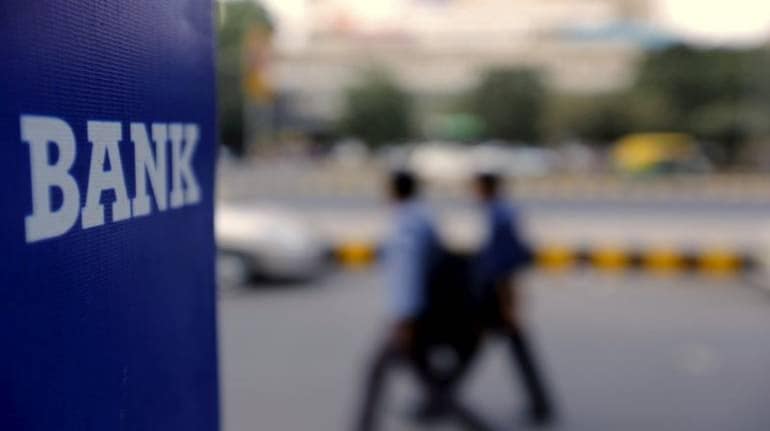



Banks are likely to post double-digit loan growth in the current financial year (FY23) on account of higher corporate demand for working capital loans and as their asset quality remains stable, analysts say.
Loan demand from individuals and micro, small and medium enterprises (MSME) will contribute to the growth, said credit assessor CRISIL, which predicts FY23 loan growth to stay in the 14-15 percent territory.
According to the latest Reserve Bank of India (RB) data, banks’ outstanding non-food credit grew 16 percent year on year (yoy) to Rs 124.30 lakh crore as of August 26, 2022, higher than the 6.7 per cent growth registered a year ago.
Even the large industry segment, which posted a 2.6 percent contraction in borrowing last year, posted 6.4 percent growth, the data showed.
“Banks are seeing demand pick up from corporates as working capital requirements expand. Also, there has been fair bit of borrowings from oil marketing companies,” said Prakash Agarwal, director and head of financial institutions ratings at India Ratings & Research.
Non-Banking Financial Companies, or NBFCs, “are also shifting a part of their borrowings back to bank loans on account of competitive rates,” Agarwal added.
“We are also seeing fair bit of traction on personal loans. Credit offtake was at decadal lows in last two years on account of pandemic and lenders are now picking up.”
According to CRISIL, NBFCs, too, are expected to post credit growth across retail segments, with unsecured loan growth returning to pre-COVID levels. Unsecured credit includes small-ticket personal loans and credit-card borrowings, among others.
NBFCs’ cost of borrowing is estimated to increase by 85-105 basis points in FY23, it added. One basis point is one-hundredth of a percentage point.
The rating agency said profitability of banks will improve with expansion in the net interest margin (NIM) and lower credit costs. Their ability to raise deposits to support credit demand will be critical.
Asset quality
In a webinar on October 3, CRISIL’s Deputy Chief Rating Officer Krishnan Sitaraman said banks’ corporate loan book, which constitutes about 45 percent of overall loans, was showing an improvement in asset quality.
“MSMEs is an area where we feel the potential for NPAs (non-performing assets) may go up,” he said.
MSMEs have been hurt more by the COVID-19 pandemic, Sitaraman said. While in other segments, only 2 percent of restructured loans slipped into the NPA category, MSMEs saw about 6 percent of restructured loans turning bad.
Pain will likely remain as about a quarter of MSME loans restructured by banks are likely to turn into NPAs, Sitaraman said. The impact on banks’ broader asset quality, though, will be minimal as outstanding MSMEs loans stood at less than Rs. 8 lakh crore as of August 26, 2022, RBI data showed.
Overall, banks’ gross NPAs are expected to improve 90 basis points on a yoy basis to 5 percent as of March-end, and to 4% in subsequent fiscal years, Sitaraman said, on account of economic recovery post-COVID-19 and higher credit growth.
While pockets of small and medium enterprises and unsecured credit segments could pose a challenge, their outstanding loan value is lower, and these factors are unlikely to impact banks’ asset quality materially, Agarwal of India Ratings & Research said.
“Further, as credit offtake is increasing, the denominator effects also come into play and overall NPAs would appear lower,” Agarwal said.
Rating upgrades
Analysts say that banks’ comfort in extending big-ticket loans to the corporate sector is on account of muted loan growth over the last two fiscal years and the fact that many companies are having their ratings upgraded.
CRISIL’s credit ratio, for example, rose to 5.52 times in H1FY23 from 5.04 times in H2FY22 and less than 2 times in H2FY21.
Credit ratio is defined as the ratio of the number of company rating upgrades to downgrades. A ratio of more than 1 indicates that there are more upgrades than downgrades.
CRISIL’s upgrade rate increased to 16.70 percent from 15.41 percent in H2FY22 and the downgrade rate remained flat at 3.02 percent, it said in a statement.
CRISIL Ratings Managing Director Gurpreet Chhatwal said around 35 percent of all upgrades were for companies in the infrastructure sector, including large realty players.
“Infrastructure sector is in a unique position of largely being a domestic story and generally decoupled from the global headwinds. Here, upgrades were driven by improved operating cash flows, completion of crucial project milestones and equity infusion,” Chhatwal said.
“Over the last few years increasing share of central counterparties in infra projects has led to more predictable payment cycles, providing additional comfort on credit quality,” he added.
Data released by rating agency ICRA on October 3 also pointed to a trend wherein rating upgrades substantially outpace downgrades.
| Year | H1 FY2021 | H1 FY2022 | H1 FY2023 | FY2021 | FY2022 | |
| No. of upgrades | 94 | 303 | 250 | 282 | 561 | |
| No. of downgrades | 200 | 108 | 76 | 316 | 184 | |
| Credit Ratio | 0.5 | 2.8 | 3.3 | 0.9 | 3.0 |
Discover the latest Business News, Sensex, and Nifty updates. Obtain Personal Finance insights, tax queries, and expert opinions on Moneycontrol or download the Moneycontrol App to stay updated!
Find the best of Al News in one place, specially curated for you every weekend.
Stay on top of the latest tech trends and biggest startup news.